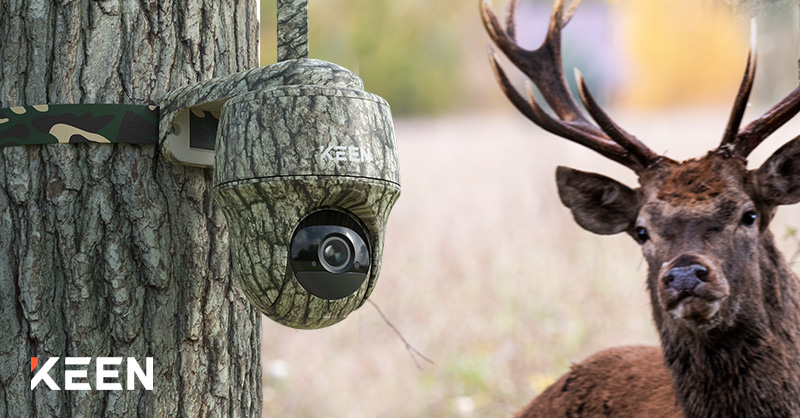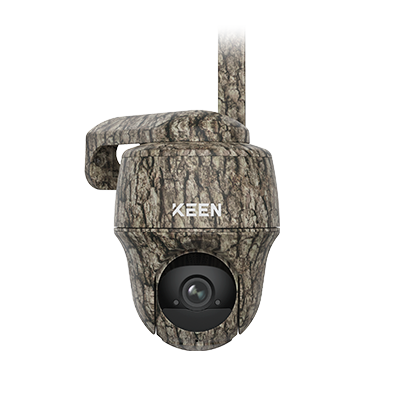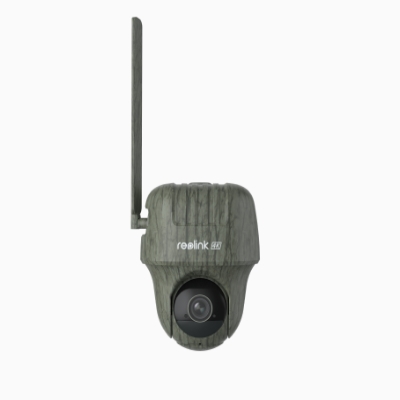3 Best Cellular Trail Cameras: Buying Guide

In the realm of wildlife photography and outdoor enthusiasts, the emergence of cellular trail cameras has revolutionized the way we capture and monitor wildlife. These cutting-edge devices have become indispensable tools. The best cellular trail camera can provide real-time insights and an immersive experience like never before.
However, in this article, we will learn about the best trail camera and how you can make the most of it.
So, here we go:
Cellular Trail Camera Reviews
Before indulging in cellular trail camera reviews, let's learn the basics of what a cellular trail camera is:
What is the cellular trail camera?
A cellular trail camera is a sophisticated device designed to capture high-quality images and videos of wildlife remotely.
Unlike traditional trail cameras that require physical retrieval of the memory card, cellular trail cameras offer real-time or near real-time transmission of data via a cellular network. This technological marvel enables users to monitor wildlife activity in remote locations without physically being present.
How does cellular trail camera work?
Cellular trail cameras use a cellular network that allows you to transmit data for multiple activities. These activities usually include finding hunting spots, monitoring wildlife, and more. As these trail cameras require a network for data transmission, you need to buy data plans for it.
Usually, cellular trail cameras feature motion detection sensors to capture each motion. The camera then records the photograph and sends instant notifications through mail or phone. Typically, these cameras are installed in outdoor settings; therefore, it can be challenging to utilize cables or power adapters for power supply. Therefore, these often come up with a battery or are solar-powered to avoid hassle.
3 Best Cellular Trail Cameras
Reolink KEEN Ranger PT
The Reolink KEEN Ranger PT is a cellular trail camera that operates on a 4G LTE cellular network. It is designed to provide a wire-free solution for outdoor monitoring and wildlife observation. It allows you to place the camera in remote locations where traditional connectivity options may not be available. The Reolink KEEN Ranger PT offers some amazing features ranging from pan and tilt functionality to lightening fast trigger speed.
Pros:
- 360 Degree View: It offers full 360-degree coverage with its pan and tilt functionality, allowing you to monitor a wide area without the need to reposition the camera.
- Smart Real-Time Alerts: Never miss a moment when wildlife crosses your camera! Instantly receive push notifications on your phone or email alerts with snapshots of the action.
- View Live Streams Anytime: Check the live feed anytime, anywhere with the Reolink App. You can monitor the wild from home without disturbing the area or leaving any scent behind.
- No Loss of Locations: You can customize your map on the app by adding markers to pinpoint where you've spotted deer, placed trail cameras, or set up feeders, so you’ll always know where to find them again.
- No-Glow IR LEDs: Emit invisible infrared light that allows the camera to capture animals in the dark without startling or scaring them.
Cons:
- It only has 2K resolution.
4G Trail Camera offers 360° Live Streaming
4G LTE Network, 2K 4MP Super HD, No-Glow IR LEDs, Person Detection, Animal Detection, Two-Way Audio, Battery/Solar Powered.
Reolink Go Ranger PT
Reolink Go Ranger PT is the first 4K 4G LTE trail camera with a 360° all-around view, offering stunning 4K 8MP Ultra HD resolution. This camera excels in animal detection and recognition, ensuring you capture every detail with clarity.
Pros:
- 4K Resolution with PT: The 4G wildlife camera offers pan-tilt functionality and delivers true 4K 8MP resolution without interpolation. You can watch live wildlife activities in a full 360° view or remotely download 4K videos and images stored on a microSD card.
- Sharp Night Vision No Interference: The camera offers crystal-clear night vision with its F1.6 large aperture and 940nm no-glow infrared LEDs. These LEDs are perfect for wildlife monitoring because they are invisible at night, ensuring that animals aren't disturbed.
- Smart Detection No Extra Fees: Smarter than other 4G cameras, the Go Ranger PT can distinguish bucks, antlerless deer, and turkeys from other objects, as well as detect people, vehicles, and animals. With a lightning-fast 0.5-second trigger speed, it captures snapshots and sends notifications instantly, keeping you updated on all the wildlife activity.
Cons:
- Battery is not removable
4K 4G LTE Wildlife Camera with 360° All-Around View
4G LTE Network, 4K 8MP Ultra HD, No-Glow IR LEDs, Person Detection, Animal Detection, Two-Way Audio, Battery/Solar Powered.
Reolink TrackMix LTE-C
Reolink TrackMix LTE-C is a 4G LTE Dual-Lens battery security camera. It provides two views at once and automatically zooms in on movement. This camera works on a 4G LTE network, making it perfect for places without Wi-Fi. It can detect people, vehicles, and animals, so you only get alerts that matter. With 4K Ultra HD resolution, it captures clear and detailed images, ensuring you don’t miss anything important.
Pros:
- Dual View, Dual Tracking: It combines wide-angle and telephoto lenses, showing both views on one screen. With 355° pan and 90° tilt, it covers a full 360°. The close-up view uses 6x hybrid zoom and pan-and-tilt features to track and focus on targets.
- Brilliant 4K Image, Quality Day and Night: The camera provides sharp 4K UHD images day and night. After dark, you have the option to turn on the spotlights for vibrant color night vision, or use the 940nm no-glow IR LEDs for discreet black-and-white monitoring. The spotlight can also be manually switched off whenever you prefer.
- Intelligent Protection: The camera smartly detects people, vehicles, and animals, sending you precise alerts. You can customize the PIR detection and set specific motion zones to suit your needs. With two-way audio, you can communicate instantly during alarms.
Cons:
- It is a little heavier.
4G LTE Dual-Lens PTZ Camera with Motion Tracking
4K 8MP UHD, Wide-Angle & Telephoto Lenses, Pan-Tilt-Zoom, Auto-Tracking, Person/Vehicle/Animal Detection, 4G LTE, Two-Way Audio.
Application of Cellular Trail Camera
Here are the key applications of cellular trail cameras that you must know:
Observe wildlife
One of the primary applications of cellular trail cameras is wildlife observation. These cameras, equipped with motion sensors and high-resolution lenses, provide an unparalleled opportunity to capture stunning images and videos of wildlife in their natural habitat.
Additionally, these cameras can instantly transmit the captured footage to a designated device or cloud storage, allowing researchers, conservationists, and nature enthusiasts to monitor and study wildlife behavior remotely.
Farmland monitoring
Cellular trail cameras have become indispensable tools for farmers and landowners. By strategically placing these cameras across their properties, farmers can monitor crop growth, detect pest infestations, and track livestock movements. With the ability to transmit real-time images and videos, these cameras provide farmers with a comprehensive view of their farmland.
Consequently, they can make informed decisions and take timely action to maximize productivity.
Hunting
For hunters, cellular trail cameras have revolutionized the way they scout and track game. By placing these cameras near game trails, feeders, or water sources, hunters can remotely monitor animal movements, identify potential trophy targets, and gather valuable intelligence about animal habits and patterns. The ability to receive instant updates and images on their mobile devices allows hunters to plan their hunting trips more effectively.
As a result, they can increase their chances of a successful hunt.
Forestry monitoring
Maintaining the health and sustainability of forests is of utmost importance, and cellular trail cameras have proven to be valuable assets in this endeavor. Foresters and conservationists can monitor tree growth, detect signs of disease or infestation, and track the impact of natural disturbances. They can do so by placing these cameras strategically throughout forested areas.
How to Place Cellular Trail Camera?
Suitable height
It is always better to set your camera at a height while keeping your target at the center. For instance, if you want to monitor wildlife, then placing your camera at 3 to 4 feet is the ideal height.
Direction
Determining the correct direction to point your cellular trail camera is essential for capturing the desired wildlife activity. The camera should be positioned to face the target area directly, ensuring that it covers the widest field of view possible.
Angle
The angle at which you position your cellular trail camera plays a vital role in the quality and effectiveness of the captured images. To achieve optimal results, it's recommended to angle the camera slightly downward. This angle helps to avoid direct sunlight, reduces the chances of false triggers caused by vegetation movement, and enhances the clarity of the footage.
Concealment
It's important to conceal your cellular trail camera effectively. This practice is important to minimize the chances of detection by wildlife and potential thieves. Consider the natural surroundings of the area and use camouflage techniques to blend the camera with its environment.
You can also use natural foliage, tree branches, or camouflage wraps specifically designed for trail cameras.
FAQs
1. Which cellular trail camera is best?
REOLINK KEEN Ranger PT is the best cellular trail camera. Factors such as image and video quality, battery life, detection circuits, and others play a vital role in trail camera selection.
2. Do cellular trail cameras require a subscription?
Yes, cellular trail cameras typically require a subscription for cellular data service. The subscription allows the camera to transmit images or videos wirelessly to your mobile device or computer. Different camera brands and models may offer various subscription plans with different pricing options.
3. Can a trail camera connect to a phone?
Yes, many trail cameras can connect to a phone. Cellular trail cameras, in particular, can transmit images or videos wirelessly to your mobile device. It allows you to view the camera's captures remotely without physically accessing the camera itself.
4. Is there a non-cellular trail camera?
Yes, there are non-cellular trail cameras available that don't rely on cellular networks for operation and data transmission. Instead, these use SD card to store captured visuals. The non-cellular cameras are ideal for places with limited cellular coverage or from where data retrieval from SD cards is easier. Additionally, these are also good if you don't want to get into cellular subscriptions and plans.
Conclusion
Choosing the best cellular trail camera comes down to your specific needs, whether it's image quality, battery life, or reliable connectivity. Consider where you'll use the camera, the detail you need, and your budget.
As technology advances, these cameras are more feature-rich and accessible than ever. Whether you're a wildlife enthusiast, hunter, or nature lover, the right camera will help you capture the moments that matter,
Search
Subscribe for the Latest Updates
Security insights & offers right into your inbox



